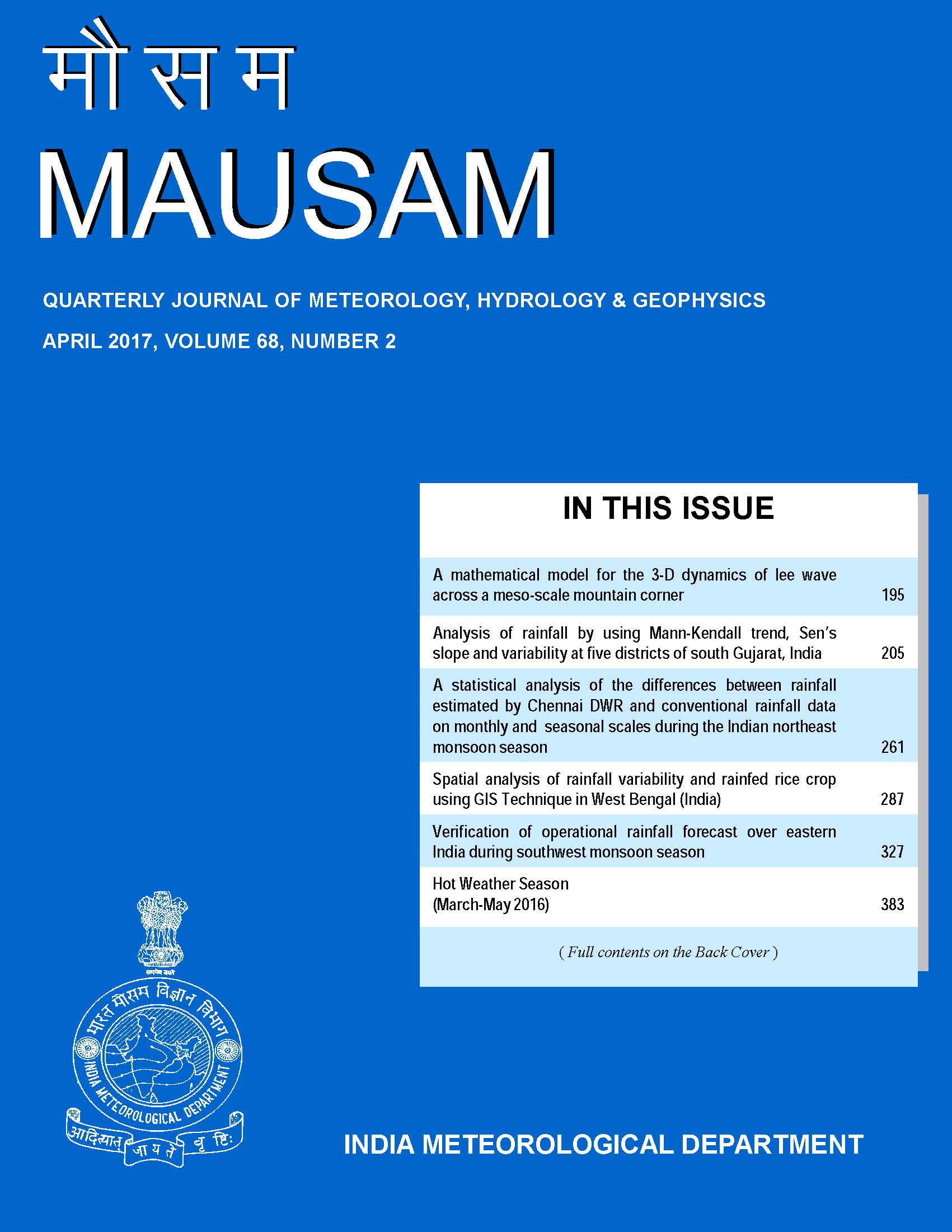Spatial analysis of rainfall variability and rainfed rice crop using GIS Technique in West Bengal (India)
DOI:
https://doi.org/10.54302/mausam.v68i2.631Keywords:
Rainfall data, Rainfed rice crop, LGP, MAI, GIS Software, Dry wet spell, Water balanceAbstract
The rainfed areas receive mean annual precipitation in range of 500-1500 mm with high degree of variability and are beset with problems of mid-season drought and associated impacts on the crop productivity. In this paper, analysis of weekly, monthly, annual rainfall and weekly rainfall probabilities in relation to crop productivity has been carried out for all the stations of the study area in West Bengal where rain-fed agriculture is predominant. However, duration of dry spells and its probabilities, climatic derivatives like commencement and cessation of rainy season, length of growing period (LGP) and estimates of water balance parameters have been carried out, in respect of all blocks in the identified three districts in West Bengal. The mean productivity during kharif season indicated that, highest productivity values of 3 to 3.5 t/ha are noticed in the block of central districts of Burdwan, Bankura, Birbhum, Hoogly districts. Perhaps, irrigation facilities in these districts might have helped in arriving at such high productivity rates. Low productivity of 1 to 1.5 t/ha have been noticed in two to three blocks of South 24-Paraganas and in Jalpaiguri districts. The productivity levels of northern districts, viz., Jalpaiguri, Coochbehar, West Dinajpur, South 24-Paranagas vary from 1.5 to 2.0 t/ha. The lowest productivity of 11.28 q /ha in Jaldha and 14.89 q /ha in Manbazar in 1996 can be due to heavy rainfall conditions in June and again in August. The mean productivity pattern of rice crop during kharif season in identified districts was analyzed with respect to occurrence of number of dry spells at different growth stages and average MAI values. The productivity was also related to monthly rainfall (July) and correlations have been mentioned for Jaldha block (0.22) and Manbazar block (0.64). The highest productivity of 2-3 t/ha are recorded in hot sub-humid to humid regions of West Bengal where LGP vary from 150 to 200 days. From the study of the probability of dry and wet spells and MAI during different crop phenophases, the most vulnerable phases can be identified in each region.
Downloads
Published
How to Cite
Issue
Section
License
Copyright (c) 2021 MAUSAM

This work is licensed under a Creative Commons Attribution-NonCommercial 4.0 International License.
All articles published by MAUSAM are licensed under the Creative Commons Attribution 4.0 International License. This permits anyone.
Anyone is free:
- To Share - to copy, distribute and transmit the work
- To Remix - to adapt the work.
Under the following conditions:
- Share - copy and redistribute the material in any medium or format
- Adapt - remix, transform, and build upon the material for any purpose, even
commercially.



